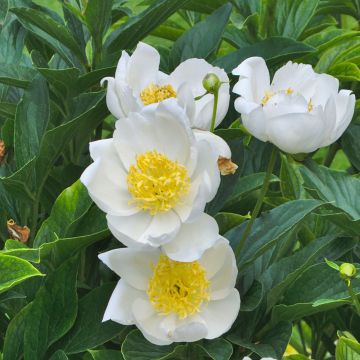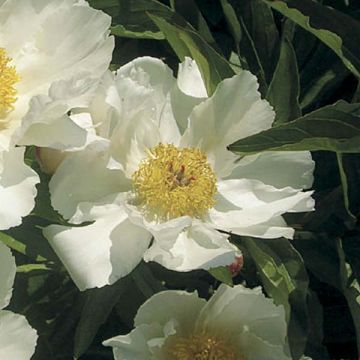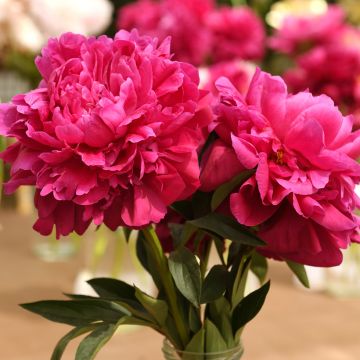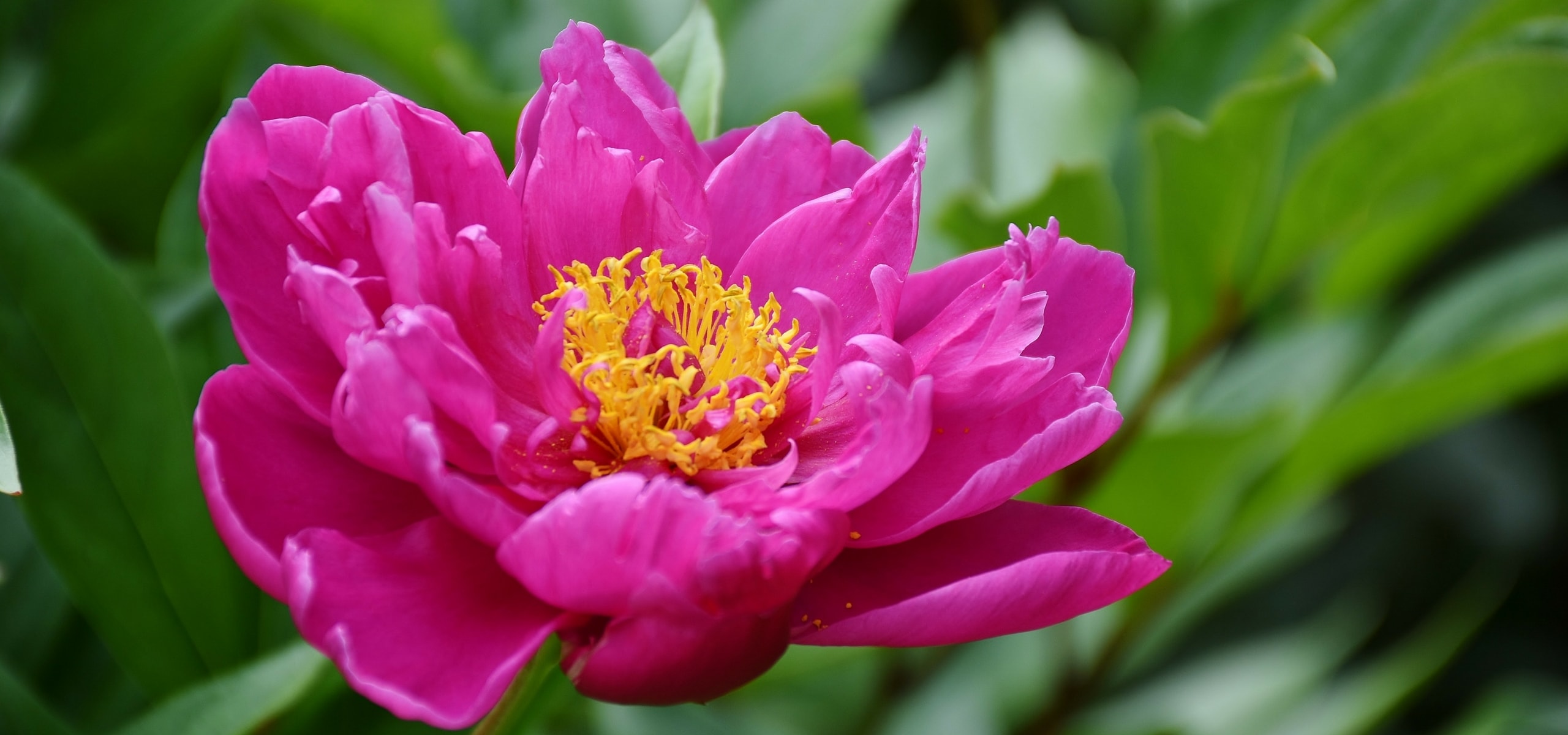
Planting peonies
Where, when, and how?
Contents
Peonies, with their enormous and crumpled flowers, are a true gem of the garden. Robust and durable, they can remain in place for decades and provide a spectacular flowering each year, provided that a few rules are followed during their planting and care. Whether you choose herbaceous peonies or tree peonies, it is essential to offer them a suitable location, appropriate soil, and regular care to ensure their flourishing. Discover all our practical tips for planting, maintaining, and caring for your peonies so that they beautify your garden for years to come!
When to plant peonies?
Peonies are quite tolerant plants when it comes to their planting period, but to maximise their flowering and successful establishment, a few precautions should be taken into account.
If you buy your peonies in pots, you can plant them all year round, provided you avoid periods of intense frost or extreme heat. However, the best time remains spring or autumn, when conditions are milder, as this allows the roots to establish better.
For peonies sold as bare roots, the ideal time to plant them is in autumn, from September to November. This gives them time to develop their roots before winter, so they are ready to flower by the following spring. By planting at this time, you encourage a stronger establishment and better flowering.
Read also
plant a tree peonyWhere to plant them?
Peonies appreciate a sunny location, essential for generous flowering, but they also tolerate partial shade. They need space and air: avoid planting them too close to other plants, as they do not like competition from neighbouring roots. They fear excess moisture, which can cause their roots to rot, so choose a spot with well-drained soil and sheltered from strong winds.
Peonies are greedy and prefer clay soil, rich in humus, deep and well-drained. Before planting, loosen the soil well and enrich it with compost or manure that is well decomposed. If your soil is too sandy, they will produce many leaves but few flowers. If the soil is clayey, their growth will be slower, but the flowering will be more generous. To improve this type of soil, add a bit of compost or leaf mould. As for pH, your land should not be too acidic; peonies prefer calcareous soils.
We advise against planting your peonies in pots, as they prefer cool, deep soils. In pots, they may lack space and the substrate will dry out too quickly.
To learn more, consult our advice sheet: “What is the best place to plant a peony?”
Discover other Paeonia - Peonies
View all →Available in 0 sizes
Available in 2 sizes
Available in 2 sizes
Available in 2 sizes
Available in 2 sizes
Available in 2 sizes
Available in 2 sizes
Available in 2 sizes
Available in 2 sizes
Available in 2 sizes
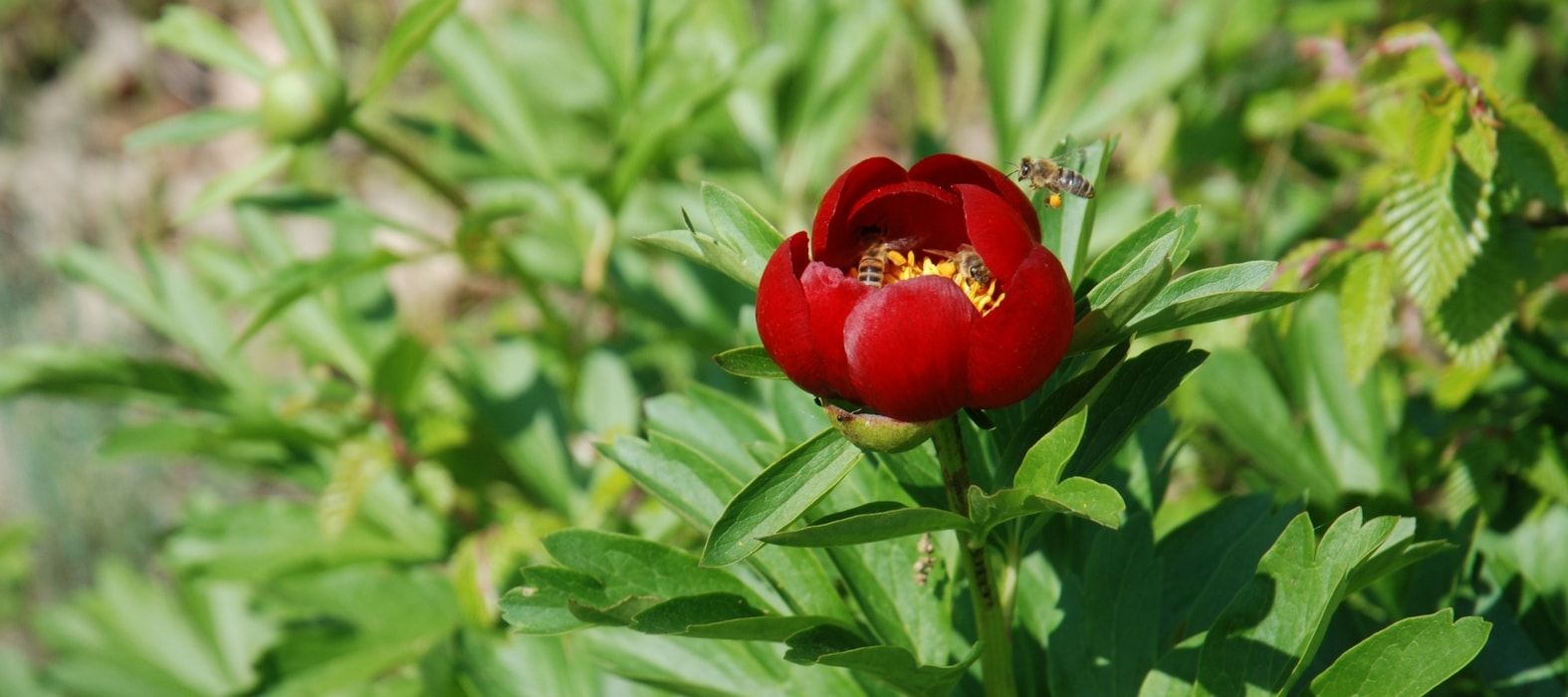
How to plant them?
Take care with planting, as peonies will remain in place for a long time. Maintain a good planting distance (about 1 metre between each plant) to avoid competition for water and minerals. Peonies are greedy plants and need space to grow well.
- Using a spade, dig a large planting hole, 40 to 50 cm deep. Incorporate well-decomposed compost, bone meal or roasted horn powder. Avoid chemical fertilisers, especially those with a high nitrogen (N) content: excess fertiliser can burn their roots and promote leaf growth at the expense of flowers.
- For herbaceous peonies purchased as bare roots, bury them covering the buds with about 3 centimetres of soil. If you plant deeper, the plant will struggle to flower. Be careful not to damage the rootlets. Shrub varieties should be planted a little deeper, under 5 or 6 cm of soil. If you plant them too deeply, your peonies will have difficulty flowering.
- For peonies purchased in containers, ensure the soil level is at the same level as the original substrate, without burying the collar.
- Firm the soil and water generously to ensure good contact between the substrate and the roots.
We recommend staking the peonies. The double flowers of peonies are particularly heavy and may collapse if not staked.
Once in place, peonies do not like to be transplanted, as they root deeply, and moving them would disturb their root system. If you must move your peony, it will take one or two years before it flowers again.
After planting: how to care for and maintain peonies?
- Regularly hoe around the peony to aerate the soil on the surface, taking care not to damage the roots.
- Cut off faded flowers to prevent seed formation, which would unnecessarily exhaust the plant. This also limits the risk of diseases.
- In the first few years, water them during dry periods. They will also appreciate being watered in spring, before flowering.
- We recommend adding compost or well-rotted manure around your peony plants every autumn.
- Peonies do not need to be pruned. For shrub varieties, light pruning in autumn can be done if necessary, but generally, they do very well without it.
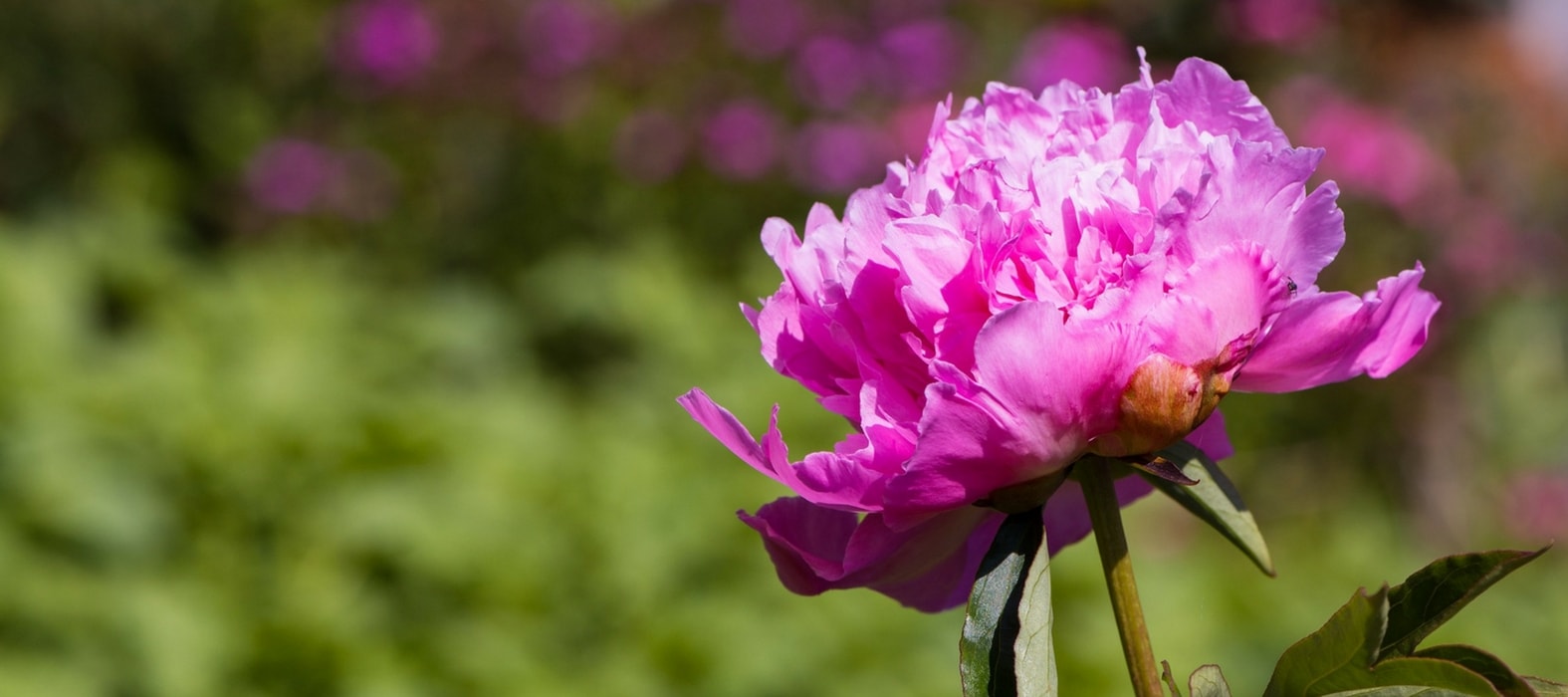
My peony isn't flowering. What should I do?
It is quite common for peonies not to flower in the first year. They need time to settle in properly. The larger the root of the peony, the more likely it is to flower quickly. Ideally, it should have at least two or three eyes. Similarly, if the conditions are not right, if the soil is too draining or too poor, or if the plant lacks water, it will not flower. Consider moving it to a location that suits it better, keeping in mind that after transplantation, it may take one or two years before it flowers.
How to make peony bouquets?
You can pick peony flowers to create stunning bouquets! These are delicate flowers that last up to five or six days in a vase. Cut them while they are still in bud, before they fully open. They will bloom once picked. Cleanly cut the stem at an angle and remove the leaves at the base. Place the vase in a cool spot, away from direct sunlight. Change the water daily.
If it rains, don’t hesitate to pick the flowers, as they will be damaged by the rain outdoors.
- Subscribe!
- Contents




































